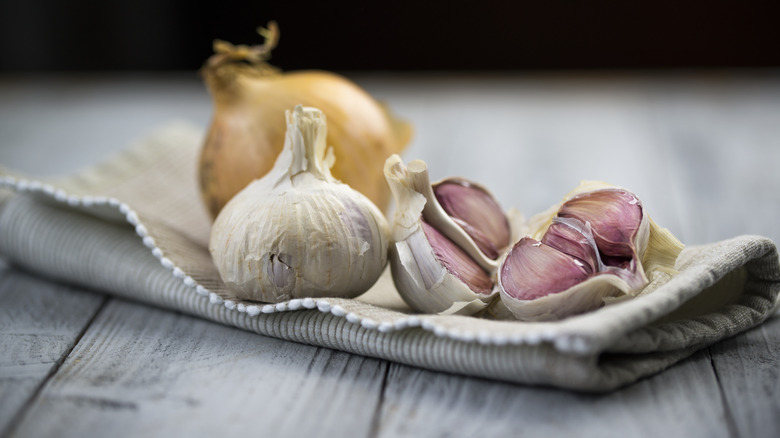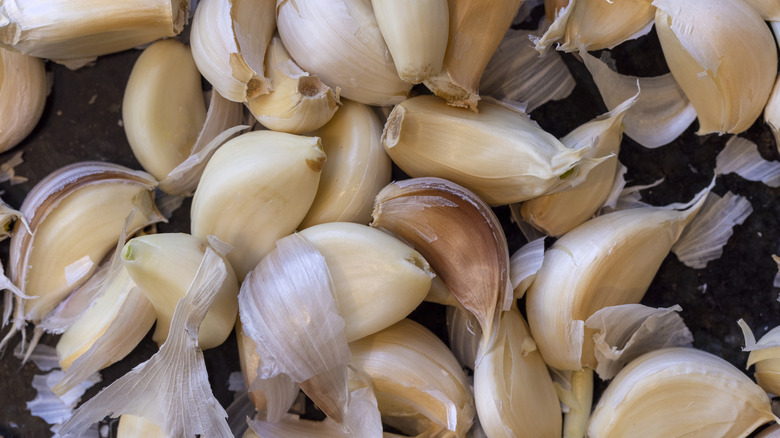Why You Should Think Twice Before Throwing Garlic Skins Away
According to ABC News, root-to-stem cooking and eating has been trending since 2018. The approach still makes sense — especially during a time in which food insecurity has been peaking across the globe, and grocery prices have continued to climb, per WHO and CNN Business. Although CNBC suggests 2023 may bring some measure of relief, it still seems an oversight not to look for ways to make use of every part of the produce we purchase or grow.
Wasting no part of produce is precisely what the root-to-stem movement is about, Farmers' Almanac explains. For example, an entire green onion may not be your cup of tea when it comes to serving crudités, but before throwing the roots out, do consider that they can be reused to grow a new batch for another day. Likewise, while the outer leaves of cabbage may strike you as too tough to use in salads, we can rattle off five ways to repurpose them, from making kimchi to throwing it in as a base for soup or stew.
That, of course, brings us to the skins of garlic. Many a chef, from Alton Brown to Ina Garten, has aptly tackled the best ways to remove them. But once removed, should we really be throwing those garlic skins away?
Garlic skin is a flavorful, nutritional powerhouse
They say that beauty is more than skin deep, but one exception may be garlic skin. We're not talking about the dry husk layer that houses the bulbs of garlic but the thinner layer that is closest to each clove. LifeHacker shares that this stickier layer can offer more flavor and aromatics to your garlic-forward dishes, such as your favorite pasta sauce or a simple bone broth. It's also packed with antioxidants that can help boost immunity, improve blood cholesterol levels, and even interfere with the aging process, according to Farmers' Almanac.
Furthermore, some cooks have been known to crush the layers of garlic skin with a mortar and pestle to create a milder version of garlic powder, states Fine Dining Lovers. Chef and wellness advocate Sophia Roe recommends that they can also yield a crispy enhancement to your salad greens (via Instagram). Simply line a sheet pan with garlic skin scraps, toss with olive oil and seasoning, roast for 10 minutes at 425 degrees Fahrenheit, and toss into your salad in place of croutons.
Apart from cooking, you can even add them to your compost pile to boost the nutrient profile of whatever you grow, per Farmers' Alamanac. So while tossing out your garlic skin may seem like usual business in the kitchen, it's a practice worth reconsidering.

